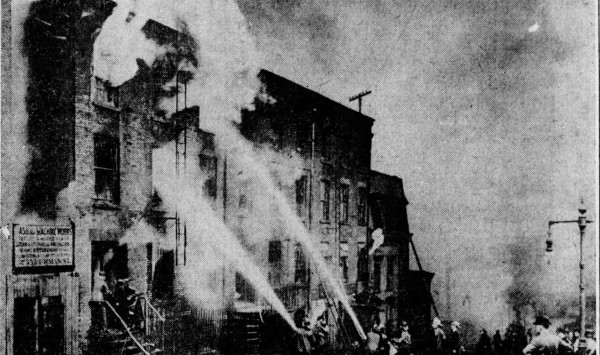THE RETURN SLAVE TRADE IN DUMBO (1889)

Back in the 19th century, newspapers knew how to tell a good yarn. And who better to get their material from than sailors who were known for spinning a few of their own. So, in 1889, when reporters heard a rumor about a ship filled with escaped snakes and monkeys, many of the former making meals of many of the latter, they raced down to the shipyards to see what stories they could find. THE CLIPPER SHIP MONROVIA AT THE EMPIRE STORES Docked down at the Empire Stores, a chain of huge coffee warehouses strategically built near the Fulton shipyard docks – in what is today known as DUMBO – was a relatively new, 3-masted clipper bark, the Monrovia. The Monrovia’s original purpose was the Liberian trade, but as all shipping companies had to make up for costs in any way they could, they usually took on a trade in passengers. The clippers’s trade route was New York to Liberia, though, so there were few passenger sources other than missionaries – until they learned of the groups hoping to repatriate former slaves. In this case, at the request of the American Colonization Society, the Monrovia had been transferring black emigrants, many of them former slaves, back to their African homeland. OUT OF AFRICA On the date of her return to New York, the Monrovia was transporting in her holds palm oil, ginger, palm nuts, cattle hides, canewood, and coffee, the last of which, in particular, caused her to dock at […]
ROASTING CORK IN A “HEIGHTS” FIRE (1907)

The Jehovah’s Witness complex in Downtown Brooklyn was once the scene of a roaring early morning 4-alarm fire that threatened to destroy the vast warehouse district that existed there in 1907. Sitting along the waterfront at the location of the fire – on both Columbia Heights and Furman Street – was a cork company, a coffee roasting factory, and an ice plant. SAVING THE WAREHOUSES It is not known where exactly within the complex the fire broke out, but it was determined by many of the residents of the district that the aroma of burnt coffee and cork did not make for a attractive combination that morning. The “oily reek of cork” was in the smell of the smoke throughout the morning, while roasted coffee – roasted twice over – brought residents to realize which warehouses were caught within the conflagration. The buildings in the picture above sat on what is now the Jehovah’s Witness compound and comprised a number of private homes that were still existent within the old warehouse district. Among them was “a frame house of the old style sort, two stories in height, with a mansard roof for an attic.” And in that building Catherine O’Neill, 50, and her bedridden sister, Agnes O’Neill, 65, both former “schoolma’rms,” feared for their lives. SAVING THE SCHOOLMARMS Patrolman Keating, who sounded the alarm, grew concerned as their building was shrouded in black smoke. No one had seen the two women that morning, and he “feared that something had happened to them.” So, […]